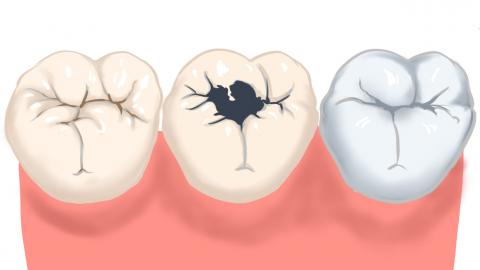What causes gum discoloration?
Generally, gum discoloration may be related to factors such as gingival aging, pigmentation, gingivitis, periodontal disease, lead poisoning, and others. It is recommended to seek timely medical consultation to identify the underlying cause and receive appropriate treatment under the guidance of a qualified physician. Detailed analysis is as follows:

1. Gingival Aging
With age, the gingival tissue undergoes physiological degeneration, and the keratinized layer on the gum surface thickens, causing the gums to darken in color. It is recommended to maintain a healthy lifestyle to support gum health.
2. Pigment Deposition
Gingival pigmentation mainly results from the deposition of pigments from food, beverages, and tobacco within the gum tissue. In daily life, one should avoid long-term and excessive consumption of pigmented foods and beverages, such as coffee, strong tea, and red wine.
3. Gingivitis
Gingivitis is primarily caused by bacterial infection. The toxins produced by bacteria irritate the gums, triggering an inflammatory response that causes redness, swelling, and congestion of the gums, leading to color changes. Symptoms often include gum bleeding, pain, and bad breath. Treatment may involve medications such as metronidazole tablets, cefuroxime axetil tablets, and roxithromycin dispersible tablets, as directed by a physician.
4. Periodontal Disease
Periodontal disease occurs when bacterial infection caused by dental plaque spreads to the periodontal tissues. Long-term inflammation affects the periodontal tissues, causing gum recession and alveolar bone resorption, which results in darkening of the gum color. Symptoms may also include loose teeth, periodontal abscesses, and impaired chewing ability. Treatment may involve medications such as minocycline hydrochloride capsules, amoxicillin capsules, and compound chlorhexidine mouthwash, as prescribed by a doctor.
5. Lead Poisoning
Lead poisoning may occur due to long-term exposure to lead-containing substances. Lead accumulates in the body and reaches the gum tissue through the bloodstream, where it combines with proteins in the gums to form a blue-black lead line. This condition may be accompanied by symptoms such as abdominal pain and anemia. Treatment may involve medications such as calcium disodium edetate injection, mesna capsules, and sodium dimercaptosuccinate injection, as advised by a physician.
In daily life, it is important to maintain a balanced diet, reduce the intake of pigmented foods and beverages, quit smoking, and limit alcohol consumption to maintain gum health.




